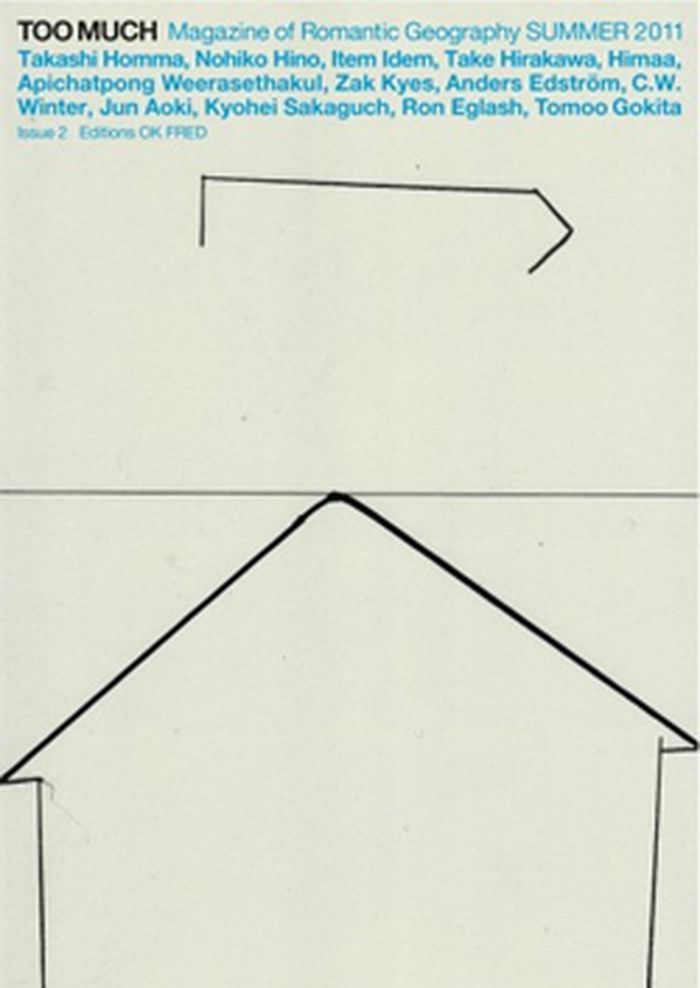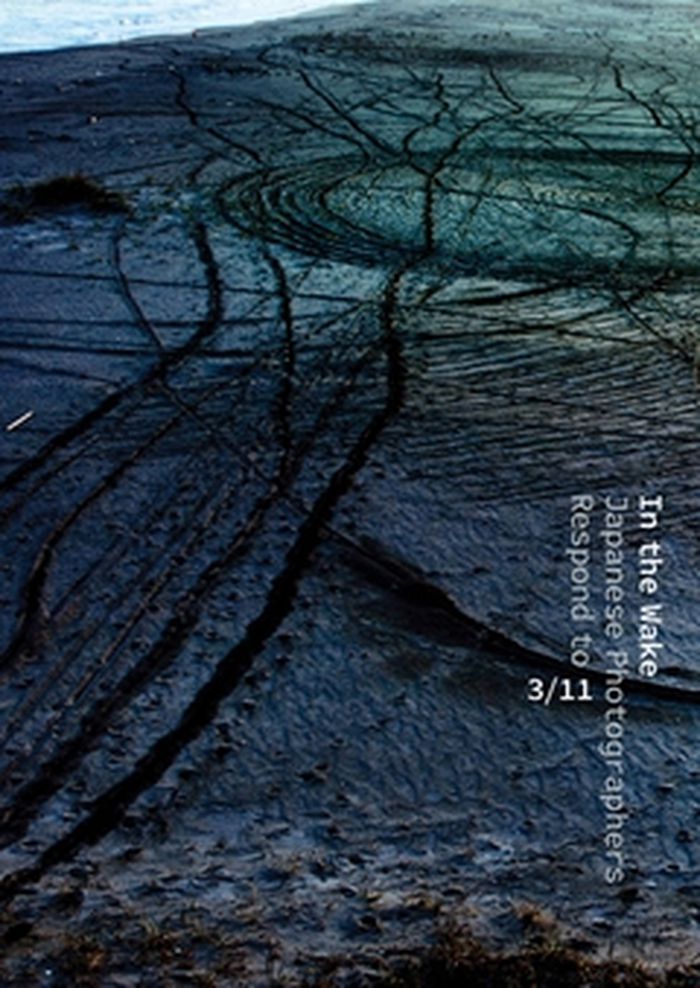Too much 2 : London Issue
$17.95
(disponible sur commande)
Résumé:
Too Much is a report on the experience of physical space; about the man-made world remaking man. Issue two is about experiences of rebuilding, constructing ideal cities, building shelter, relocating to the countryside (or jungle, or desert), and living in new ways. With contributions by Takashi Homma, Jun Aoki, Anders Edström and Apichatpong Weerasethakul among others.
Too much 2 : London Issue
Actions:
Prix:
$17.95
(disponible sur commande)
Résumé:
Too Much is a report on the experience of physical space; about the man-made world remaking man. Issue two is about experiences of rebuilding, constructing ideal cities, building shelter, relocating to the countryside (or jungle, or desert), and living in new ways. With contributions by Takashi Homma, Jun Aoki, Anders Edström and Apichatpong Weerasethakul among others.
Revues
Reference #1
$40.00
(disponible sur commande)
Résumé:
Reference #1 is a limited edition print publication centered around an exploration of living design in recent history. The publication aims to highlight a myriad of approaches towards the topic, with subjects including the late Cristiano Toraldo di Francia of Superstudio, Ken Price, Polly Pocket, Stonehenge, Minitel, Japanese Demolition, and the Rosetta Stone, among(...)
Revues
octobre 2021
Reference #1
Actions:
Prix:
$40.00
(disponible sur commande)
Résumé:
Reference #1 is a limited edition print publication centered around an exploration of living design in recent history. The publication aims to highlight a myriad of approaches towards the topic, with subjects including the late Cristiano Toraldo di Francia of Superstudio, Ken Price, Polly Pocket, Stonehenge, Minitel, Japanese Demolition, and the Rosetta Stone, among others. Contributors include Joan Didion, Takashi Homma, Superstudio, Charlotte Wales, Eric Wrenn, Blommers & Schumm, Joe Gebbia, Image Group, Alessandro Bava, Calla Henkel and Max Pitegoff, Maciek Pozoga, Octave Perrault, and Nancy Meyers, among others.
Revues
$70.00
(disponible sur commande)
Résumé:
The catastrophic events of March 11, 2011—the earthquake, tsunami and ensuing nuclear meltdown of the Fukushima Daiichi Nuclear Power Plant—have been called "the triple disaster" in Japan. Among the first artists to respond to these experiences were photographers. Some attempted to document the devastation, while others ruminated on the meaning and use of photography in(...)
février 2015
In the wake: japanese photographers respond to 3/11
Actions:
Prix:
$70.00
(disponible sur commande)
Résumé:
The catastrophic events of March 11, 2011—the earthquake, tsunami and ensuing nuclear meltdown of the Fukushima Daiichi Nuclear Power Plant—have been called "the triple disaster" in Japan. Among the first artists to respond to these experiences were photographers. Some attempted to document the devastation, while others ruminated on the meaning and use of photography in the wake of tragedy. As the immediate effects of the earthquake and tsunami gave way to nuclear disaster, artists began to respond to the challenges of depicting an invisible threat that calls up the collective memory of Hiroshima and Nagasaki. Artists include Takashi Arai, Nobuyoshi Araki, Ishu Han, Naoya Hatakeyama, Takashi Homma, Kikuji Kawada, Rinko Kawauchi, Keizo Kitajima, Kozo Miyoshi, Masato Seto, Lieko Shiga, Shimpei Takada, Masaru Tatsuki, Daisuke Yokota and Tomoko Yoneda.
$45.00
(disponible en magasin)
Résumé:
Le présent ouvrage documente deux réalités urbaines complémentaires qui ont joué un rôle fondamental dans l’imaginaire de la ville moderne du vingtième siècle, ainsi que dans sa définition et ses multiples redéfinitions. Se démarquant de l’idée que l’architecture qui fait l’Histoire est celle des chefs-d’œuvre monumentaux, les textes recueillis ici s’attachent plutôt à(...)
Casablanca Chandigarh : bilans d’une modernisation
Actions:
Prix:
$45.00
(disponible en magasin)
Résumé:
Le présent ouvrage documente deux réalités urbaines complémentaires qui ont joué un rôle fondamental dans l’imaginaire de la ville moderne du vingtième siècle, ainsi que dans sa définition et ses multiples redéfinitions. Se démarquant de l’idée que l’architecture qui fait l’Histoire est celle des chefs-d’œuvre monumentaux, les textes recueillis ici s’attachent plutôt à l’histoire des espaces publics, des structures d’habitation et des installations communautaires de ces deux villes, dont les plans modernes se sont révélés étonnamment adaptables sur la durée. Cette perspective est illustrée par les photographies de Yto Barrada et de Takashi Homma, deux artistes qui se sont efforcés d’y capturer l’essence de la vie urbaine au quotidien. Dans un monde marqué par la décolonisation et les complexités politiques de la guerre froide, Casablanca et Chandigarh figurent à la fois comme une illustration et un contre-exemple des processus de modernisation et de développement. Les trois chapitres de cet ouvrage établissent le contexte qui permet d’interpréter la réalité urbaine de Casablanca et de Chandigarh comme le résultat de processus dynamiques et nuancés d’échanges internationaux stimulés par l’engagement et l’expertise d’une nouvelle classe de professionnels de l’urbanisme. Grâce à son étude des acteurs, des idéologies et des objectifs qui sous-tendent ces deux réalisations urbanistiques, le présent ouvrage vise à contribuer à une historiographie divergente de l’urbanisme d’après-guerre et aux réflexions actuelles sur l’effet des pratiques transnationales en matière d’urbanisme.
Publications du CCA
$45.00
(disponible en magasin)
Résumé:
This book documents two complementary urban realities that have played a fundamental role in the imagination, definition and redefinition of the twentieth-century modern city. Shifting away from an understanding of architecture as the construction of monumental masterpieces, the texts collected here assemble the narratives behind the public spaces, housing and social(...)
Casablanca Chandigarh: a report on modernization
Actions:
Prix:
$45.00
(disponible en magasin)
Résumé:
This book documents two complementary urban realities that have played a fundamental role in the imagination, definition and redefinition of the twentieth-century modern city. Shifting away from an understanding of architecture as the construction of monumental masterpieces, the texts collected here assemble the narratives behind the public spaces, housing and social facilities in these two cities, where modern plans have proven unexpectedly resilient and adaptable over time. This perspective is reinforced through visual contributions by Yto Barrada and Takashi Homma—two photographers especially invested in capturing everyday urban life. In a world marked by decolonization and Cold War politics, Casablanca and Chandigarh appear simultaneously as exponents of and countercurrents to modernization and its development perspectives. The book’s three chapters set the context for reading Casablanca and Chandigarh as the results of nuanced, dynamic processes of international exchange driven by the engagement and expertise of a new class of design professionals. As a dossier of actors, alignments and agendas, the book contributes to an alternative historiography of post-war urbanism and to recent reflections on the impact of transnational practice.
Publications du CCA
$61.95
(disponible en magasin)
Résumé:
Photographs by Homma Takashi. Roppongi Hills is one of Japan's largest integrated property developments, located in the Roppongi district of Tokyo. Constructed by building tycoon Minoru Mori, the mega-complex incorporates office space, apartments, shops, restaurants, cafés, movie theaters, a museum, a hotel, a major TV studio, an outdoor amphitheater, and a few parks. The(...)
mars 2006, Tokyo
Six strata : Roppongi Hills defined
Actions:
Prix:
$61.95
(disponible en magasin)
Résumé:
Photographs by Homma Takashi. Roppongi Hills is one of Japan's largest integrated property developments, located in the Roppongi district of Tokyo. Constructed by building tycoon Minoru Mori, the mega-complex incorporates office space, apartments, shops, restaurants, cafés, movie theaters, a museum, a hotel, a major TV studio, an outdoor amphitheater, and a few parks. The centerpiece is the 54-story eponymous Mori Tower. Mori's stated vision was to build an integrated development where high-rise inner-urban communities allow people to live, work, play, and shop in close proximity to eliminate commuting time. Seventeen years in the making, the complex opened to the public on april 23, 2003.





